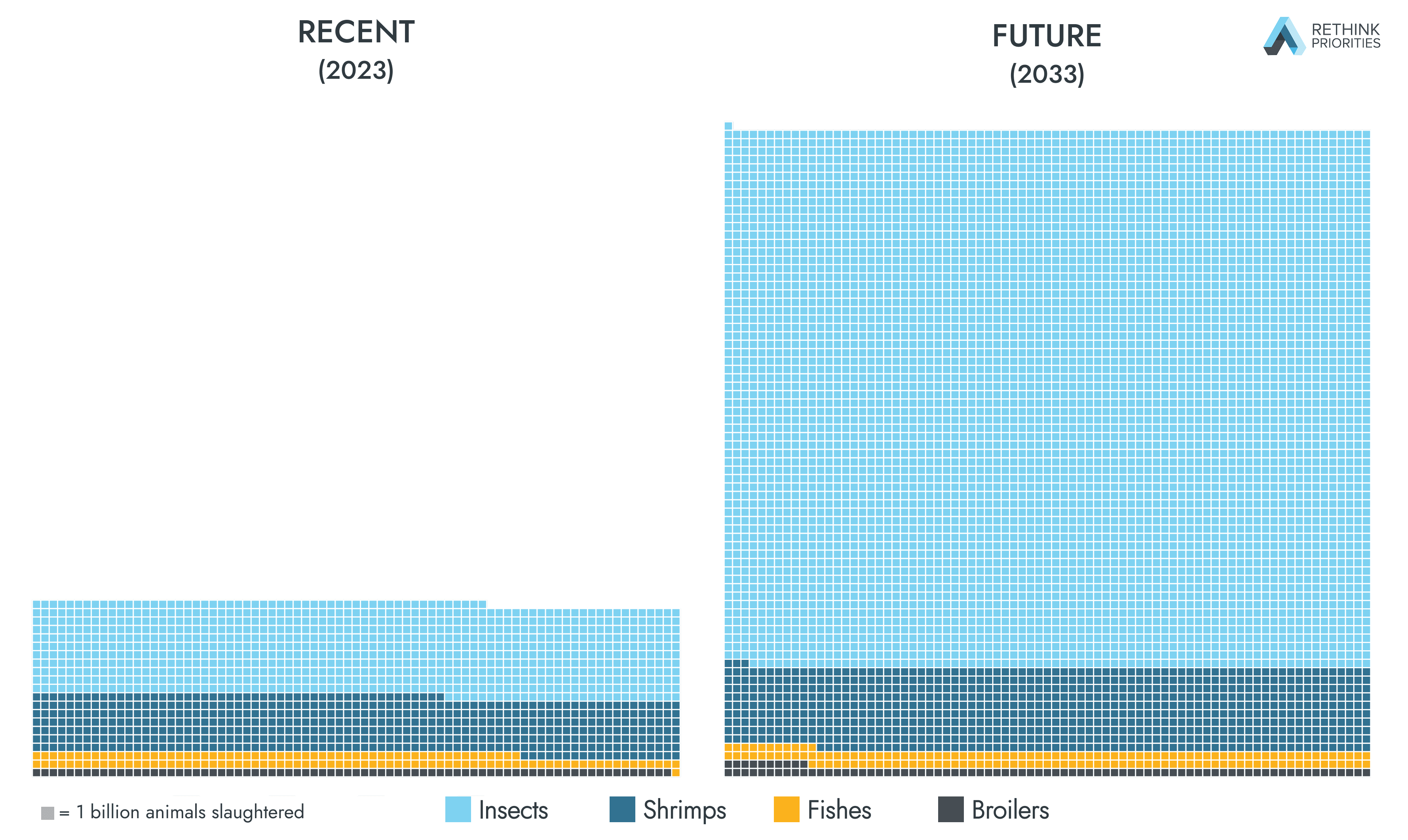Citation: McKay, H. and Shah, S. (2025). Forecasting farmed animal numbers in 2033. Rethink Priorities.
The report is also available on the Rethink Priorities website.
Executive summary
We produced rough-and-ready forecasts of the number of animals farmed in 2033 with the aim of helping advocates and funders with prioritization decisions. We focus on the most numerous groups of farmed animals: broiler chickens, finfishes, shrimps, and select insect species.
Our forecasts suggest almost 6 trillion of these animals could be slaughtered in 2033 (Figure 1).
Figure 1: Invertebrates could account for 95% of farmed animals slaughtered in 2033 according to our midpoint estimates. Note that ‘Insects’ only includes black soldier fly larvae and mealworms.
Our midpoint estimates point to a potential fourfold increase in the number of animals slaughtered from 2023 to 2033 and a doubling of the number of animals farmed at any time.
Invertebrates drive the majority of this growth, and could account for 95% of farmed animals slaughtered in 2033 (see Figure 1) and three quarters of those alive at any time in our mid-point projections.
We believe our forecasts point to an urgent need to address critical questions around the sentience and welfare of farmed invertebrates.
Our estimates come with many caveats and warnings. In particular:
* Species scope: For practicality, we produced numbers only for a few key animal groups: broiler chickens, finfishes, shrimp, and certain insects (black soldier flies and mealworms only).
* Sensitivity to insect farming growth: Our forecasts are particularly sensitive to the growth in insect farming, which is highly sensitive to the success of insect farming business models and their ability to attract future investment.
The recent and forecasted estimates, with 90% subjective credible intervals, can be viewed below in Table 1.
Table 1: Estimates of recent and forecasted numbers of broiler chickens, finfishes, shrimps, and insects slau


Sweet!